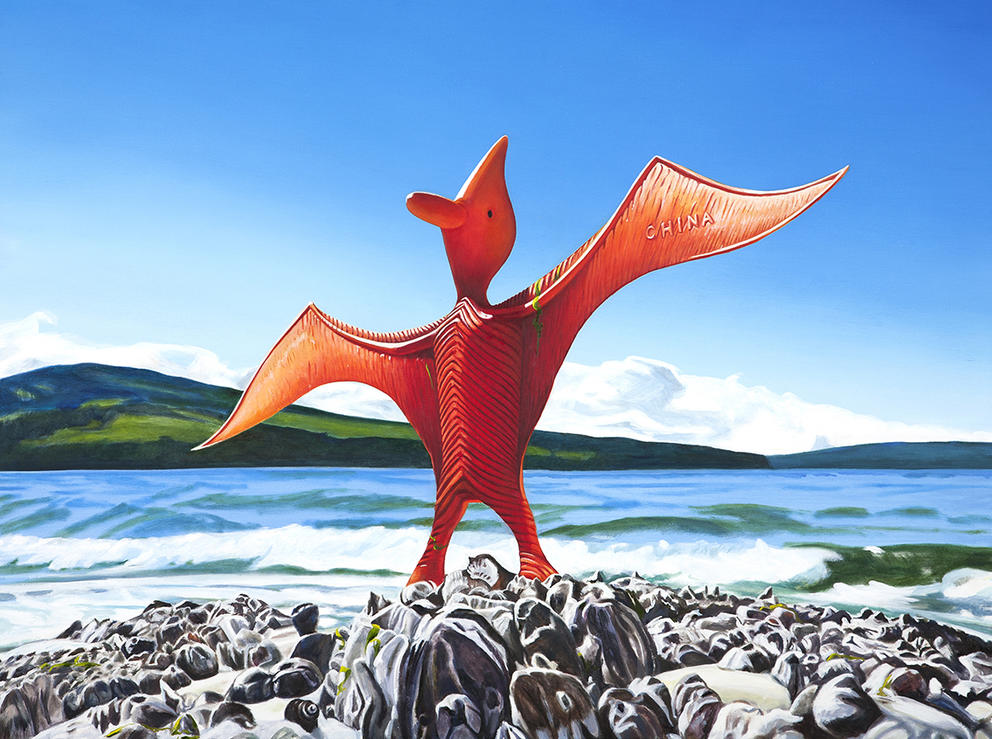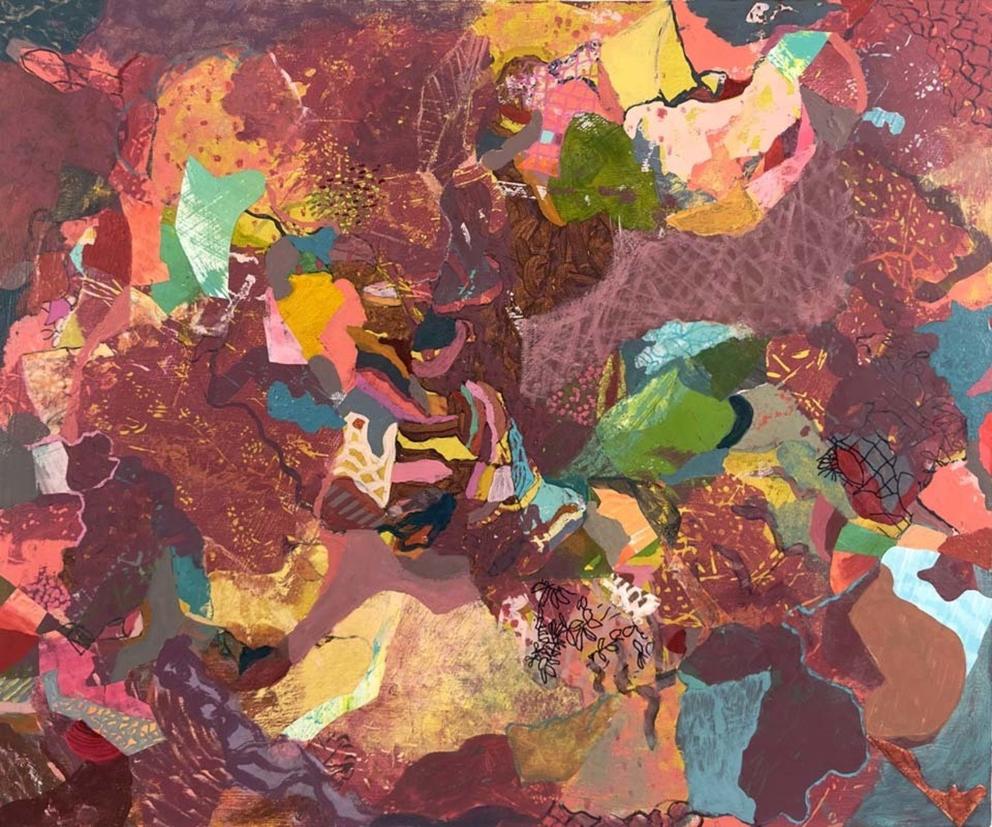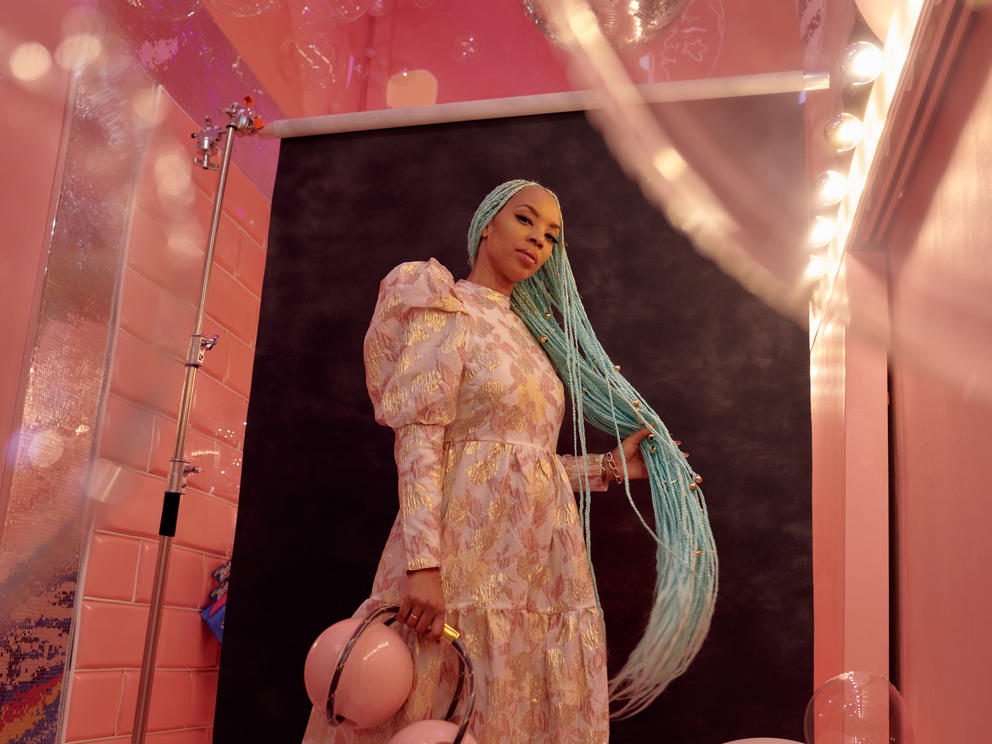But 53 years later, Earth Day sounds more plaintive — might we have one day when humans aren’t doing irreparable damage to the planet?
ArtSEA: Notes on Northwest Culture is Crosscut’s weekly arts & culture newsletter.
This year’s official theme has a whiff of Wall Street: “Invest in Our Planet.” Meanwhile, the King County Department of Natural Resources and Parks is trying a gentler approach — “Love, Protect, Restore” — and offering tips from how to use the Wastemobile for hazmat disposal to places you can volunteer to help restore delicate habitats. Litter clean-ups are taking place at many local parks on Saturday, as well as around the Fremont Troll.
And at Northwest galleries, artists are sending the environmental message too, in forms from abstracted to sarcastic, minimalist to realist.
At Schack Art Center in Everett, a pairing of shows aims to elucidate the perilous state of our ecology. A Precarious Edge (through June 3) features the work of La Conner artists Meg Holgate and Steve Klein; the former contributing misty and meditative paintings of cracked glaciers and fishing nets, the latter kiln-formed glass landscapes etched with evergreens, glaciers and forest fires.
Running simultaneously at Schack and curated by Holgate and Klein is Exploring the Edge (through June 3). This group show features work by multimedia artist Joseph Rossano, carver Steve Jensen and several other acclaimed Northwest artists.
Among them is Port Townsend painter Karen Hackenberg, who has long been collecting trash that washes up on nearby beaches and painting the plastic items with a hyper-realistic, pop-art approach. Documenting the objects on Puget Sound shores — as if newly found marine species — is a tongue-in-cheek take that’s both darkly funny and affecting.
For a totally different depiction of Northwest seascapes, stop by the new show at the Cascadia Art Museum in Edmonds. As with many Cascadia shows, Annah Wright Rogers Remembered (through July 16) highlights a largely unknown regional artist.
Born in Seattle in 1898, Rogers grew up in the city and attended Broadway High School, where her artistic talent emerged. After graduating from the Art Institute of Chicago, she returned home and worked as an illustrator for star Seattle architect Arthur Loveless.
Though her artistic inclinations were interrupted by raising a family, Rogers’ dreamy watercolors remain as a testament both to her promise as a painter and her love of regional mountains, lakes and forests.
You’ll find a significantly more abstracted love of local landscape in Lost and Found (through May 13), a show of work by longtime Northwest artist Sue Danielson. “Rich ecological patterns of urban forests and watersheds, including the industry heavy Duwamish River Valley, ground my abstract work,” she writes in her artist statement.
Danielson’s masses of multicolored organic shapes — made with a mix of paint, paper, plastic, found fabric and acrylic transfers — are appealing even without the backstory. But once you learn it, you start to see it: a turquoise subalpine lake here, a rocky riverbed here, and moss all around (including in the piece with my favorite title, “Mossiness”).
Also in Pioneer Square, at Davidson Galleries, Seattle artist Eunice Kim telescopes our environmental focus down to the knots of a tree in Currents & Tides (through May 27). The Seoul-born artist says she is influenced by her Korean childhood and her grandmother’s meditative practice. Presented inside simple circles, Kim’s black-and-white collagraphs and monoprints resemble trees as seen through a microscope, each fine grain apparent.
Finally, the excellent and ecologically focused show Strange Weather (which I explored in March) continues at Bellevue Arts Museum (through August 20). Look for culturally charged landscapes by Wendy Red Star; floral decadence by Kehinde Wiley; a woman-turned-budding bush by Alison Saar; and, from Nicola Lopez, a sprawling wall-mounted collage that depicts mangled pipes and twisted cranes interspersed with spindly flowers (but which are winning?).
More arts in our environment
The 20th annual Seattle Black Film Festival kicks off at LANGSTON this weekend (April 22 - 30), featuring an intriguing array of cinema. Included is a screening and live performance (April 27 at 6 p.m.) of Seattle artist and curator Tariqa Waters’ variety show Thank You, MS PAM. Expect and enjoy dancing, roller skating and music.
(Sidebar: Waters is featured in Crosscut’s Black Arts Legacies project. Season 2 starts next week. Have you signed up for the BAL newsletter yet?)
Also on deck at SBFF: An in-progress screening of a Seattle Black Panther Documentary about the founding of the local chapter (April 22, 5 p.m.); Black People Surf? (April 23, 4 p.m.), a doc by Seattle-born director Bailey Williams about the Black surfing renaissance; and two showcases of locally made short films (April 30 at 1 p.m. and 3 p.m.) covering topics including CHAZ, Tacoma’s Hilltop neighborhood, Seattle’s skate community and the journey of a Seattle-based rapper.
Across town, at the Seattle Nordic Film Festival (Majestic Bay Theater in Ballard, April 21 - 23), there are lots more films to consider — all hailing from Sweden, Finland, Iceland and Norway.
Included are the already buzzy Sick of Myself, as well as a horror movie called Lamb that has me freaked out with the description of a couple in rural Iceland that makes “an alarming discovery one day in their sheep barn.” But with reportedly gorgeous cinematography, sweeping Iceland views and an, um, intense human-animal connection this too goes on the list of environmental art.
Get the latest in local arts and culture
This weekly newsletter brings arts news and cultural events straight to your inbox.





